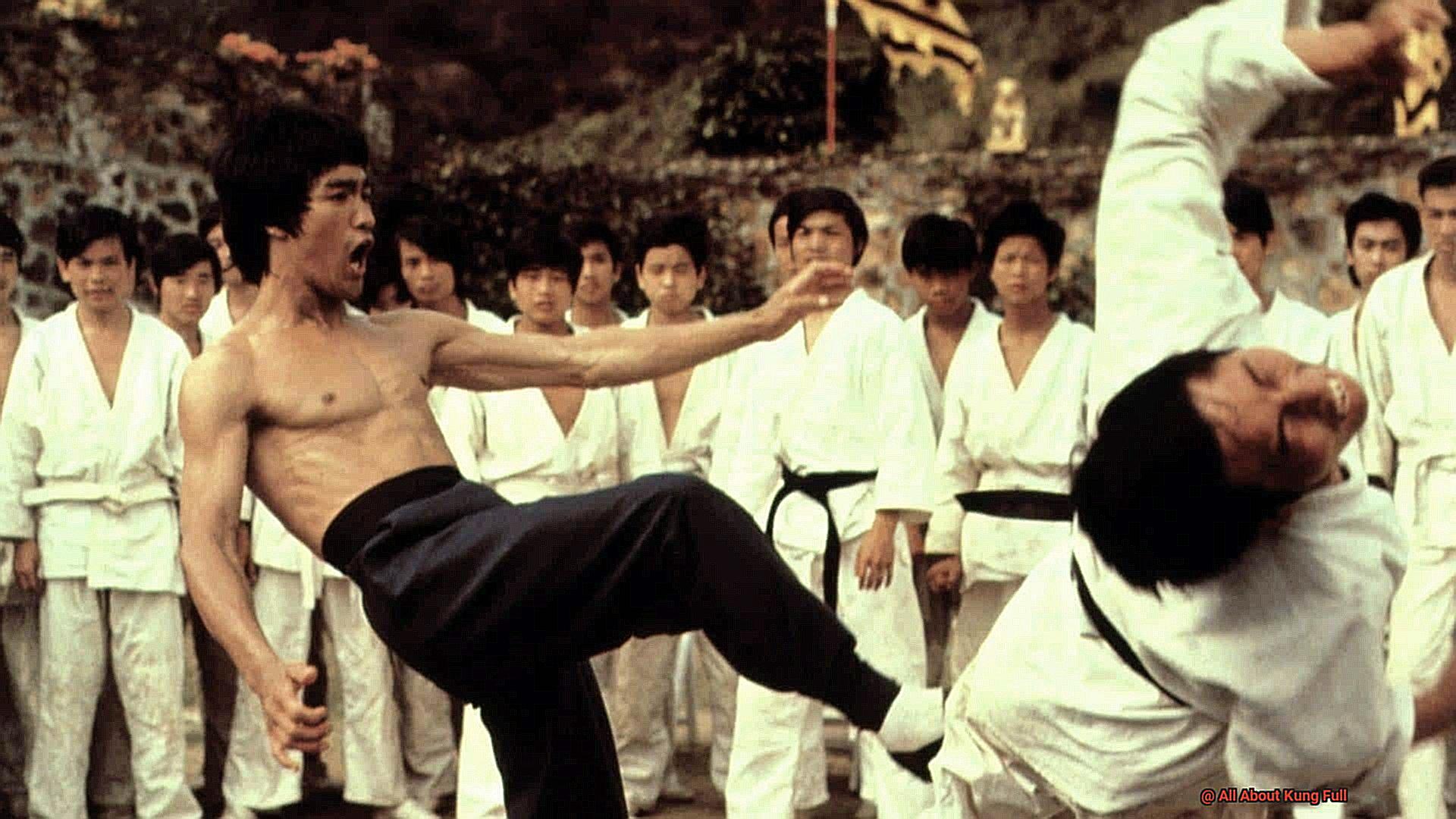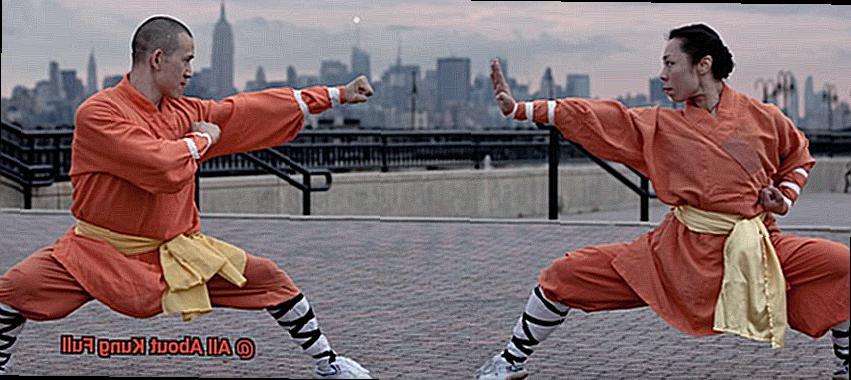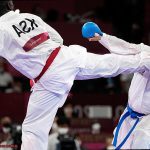Looking for a way to strengthen your mind, body, and spirit while also mastering self-defense techniques? Look no further than Kung Fu. This dynamic martial art has a rich history dating back to ancient China and offers a highly disciplined and challenging practice that requires physical strength, mental focus, and emotional control. With its wide range of styles and techniques, Kung Fu is a versatile practice that can be tailored to suit any individual’s needs.
In this comprehensive guide, we’ll explore all aspects of Kung Fu – from its fascinating origins and evolution to the unique techniques and philosophies employed by practitioners around the world. You’ll discover how regular practice can increase your strength, flexibility, stamina, mental clarity, and emotional resilience.

Whether you’re an experienced martial artist or completely new to the world of Kung Fu, this guide has something for everyone. So why wait? Join us on a journey into the mysterious and captivating world of Kung Fu and experience firsthand how this ancient practice can transform your mind, body, and spirit.
History of Kung Fu
The story of Kung Fu begins at the Shaolin Temple in Henan province, China during the 5th century. The temple was a center of Buddhist learning and physical training where monks developed a system of exercises to improve their health and physical strength.
These exercises gradually evolved into a form of self-defense that became known as Kung Fu. Initially, Kung Fu was only taught to the monks in the Shaolin Temple, but over time, they began to teach their techniques to others outside the temple.
During the Tang Dynasty (618-907 AD), Kung Fu became more widely practiced throughout China. It was during this period that Kung Fu began to be used in military training and became an essential part of Chinese culture. As centuries passed, Kung Fu continued to evolve into different styles and techniques.
Today, some of the most well-known Kung Fu styles include Wing Chun, Tai Chi, and Shaolin Kung Fu. Each style has its unique set of movements and techniques, but all share a common goal: to improve physical fitness and promote mental and spiritual well-being.
Kung Fu is more than just a physical practice. It is a way of life that emphasizes discipline, respect, and self-improvement. Practitioners use a combination of punching, kicking, and blocking techniques to defend themselves against attackers.
However, Kung Fu is not only about physical strength; it also stresses mental focus and discipline. To achieve mastery in the art, practitioners must train their minds as well as their bodies. This mental discipline can help improve concentration, focus, and overall well-being.
Today, Kung Fu is practiced globally by people from all ages and backgrounds. Its popularity shows no sign of slowing down as it continues to captivate people worldwide. The history of Kung Fu is a testament to the resilience and adaptability of this ancient art form, which inspires and fascinates people around the world.
Kung Fu is an ancient martial art with a rich history that has stood the test of time. It offers a unique combination of physical and mental discipline that can benefit practitioners in all aspects of life. So why not take that first step on your journey towards mastery in Kung Fu?
Different Styles of Kung Fu
Kung Fu is a broad term that encompasses various martial arts styles originating from China. Each style of Kung Fu has its unique techniques, movements, and philosophy, making it a diverse and exciting art form. Let’s delve into some of the most popular styles of Kung Fu and what makes them stand out.
- Firstly, we have the legendary Shaolin Kung Fu style. Originating from the Shaolin Temple in China, Shaolin Kung Fu is well-known for its fast, powerful strikes, and acrobatic movements. It emphasizes both hard and soft techniques and requires discipline, flexibility, and endurance from its practitioners. Shaolin Kung Fu is an excellent choice for those who want to improve their physical prowess while learning self-defense skills.
- Next up is Wing Chun, a popular style of Kung Fu developed by a woman named Yim Wing Chun. It emphasizes close-range combat and quick, efficient strikes, making it an ideal choice for those who may not have a lot of physical strength or size but still want to defend themselves. Wing Chun practitioners also learn to defend themselves using body position and footwork.
- For those seeking a more gentle form of Kung Fu, Tai Chi is the perfect option. Tai Chi focuses on slow, flowing movements designed to improve balance, coordination, and relaxation. Often practiced by older adults or those looking for a low-impact form of exercise, Tai Chi also doubles as an effective form of self-defense when needed.
- Last but not least is Baguazhang – a circular style of Kung Fu that emphasizes fluidity and evasiveness. Practitioners learn to move around their opponents rather than engaging them head-on using a combination of kicks, strikes, and throws. This style is particularly useful for those who prefer to avoid confrontation whenever possible.
Kung Fu offers a wide range of styles to choose from, each with its unique techniques and philosophy. Whether you’re looking for an aggressive, acrobatic style like Shaolin Kung Fu or a more gentle form like Tai Chi, there is a style of Kung Fu that will suit your needs. Regardless of which style you choose, all Kung Fu styles promote physical health, mental strength, and self-defense skills.
Benefits of Practicing Kung Fu
It’s not just a physical discipline but also a mental one, offering a range of benefits that can improve your overall well-being.
One of the most significant benefits of Kung Fu is its positive impact on physical health. The movements involved in Kung Fu require strength, agility, and flexibility, making it a great way to improve overall fitness levels. By practicing regularly, you can reduce body fat and build muscle strength, leading to a healthier and more active lifestyle.
But Kung Fu is not just about physical health – it’s also great for mental health. The focus and concentration required in Kung Fu can help improve mental clarity and reduce stress levels. By practicing self-control and discipline through Kung Fu, you can develop self-confidence, patience, and resilience – all qualities essential for maintaining good mental health.
Another significant benefit of Kung Fu is its effectiveness as a form of self-defense. The techniques taught in Kung Fu classes can be useful in dangerous situations, especially for women who are vulnerable to attacks. By learning Kung Fu techniques, individuals can defend themselves better and feel more confident and empowered.
But perhaps one of the most underrated benefits of practicing Kung Fu is its ability to provide a sense of community and belonging. Kung Fu classes often involve group activities and team-building exercises that can help in developing social skills and making new friends. This sense of community can also provide support and motivation for individuals to continue practicing Kung Fu regularly.
Practicing Kung Fu offers numerous benefits for both physical and mental health, self-defense skills, and social connections. It’s an excellent way to improve overall well-being while also learning a valuable skill.
Training for Kung Fu
Kung Fu is more than just a martial art; it’s a way of life that requires dedication, discipline, and patience. To become proficient in Kung Fu, you must commit to years of training that combines both physical and mental exercises aimed at enhancing your strength, agility, speed, flexibility, and balance.
The first step in Kung Fu training is conditioning your body. This involves intense workouts like running, jumping, and weightlifting that build up your endurance and stamina. Specific muscle group exercises are also included to develop power and speed. Conditioning is essential as it prepares your body for the physical demands of the martial art.
Another critical aspect of Kung Fu training is practicing forms or routines. These prearranged sequences of movements simulate fighting situations and help you develop muscle memory, coordination, and balance. Forms provide a controlled environment to practice techniques before applying them in sparring or real-life situations.
Sparring is an integral part of Kung Fu training. It involves practicing techniques against a partner in a safe environment. Sparring develops timing, reflexes, and strategy. It provides an opportunity for you to test techniques under pressure, learn from mistakes, and improve your skills.
While Kung Fu is primarily a physical activity, mental development is equally important. Meditation is an integral part of Kung Fu training as it cultivates focus, concentration, and inner peace. Mental discipline is crucial for mastering Kung Fu.
Kung Fu requires unwavering dedication, discipline, and patience. It takes years of consistent practice to master this martial art fully. With the right mindset and guidance from a qualified instructor, anyone can learn the skills necessary to become proficient in Kung Fu.
Equipment Needed for Kung Fu
Kung Fu is a martial art that requires immense focus, skill, and dedication. And to maximize the effectiveness of your training, you need the right equipment. Proper equipment not only ensures your safety but also helps you perform at your best.
The traditional Kung Fu uniform, known as a “gi” or “wushu suit,” is designed to provide maximum movement and flexibility. Its loose-fitting pants and jacket with a mandarin collar allow you to execute fluid movements with ease. Meanwhile, Kung Fu shoes are lightweight, flexible, and come in various styles like slip-on shoes, lace-up shoes, and boots. These shoes offer excellent support and traction so that you can maintain balance while executing complex techniques.
When it comes to sparring and contact training, protective gear such as headgear, mouthguards, gloves, and shin guards are essential for avoiding injuries that can derail your progress. These items protect sensitive areas of your body from impacts and other forms of injury.
Kung Fu weapons like swords, staffs, spears, and other traditional Chinese weapons are used to enhance strength, coordination, and balance. These weapons also help develop precision, power, and speed in executing strikes and blocks.
In addition to weapons, other equipment used in Kung Fu training includes punching bags, wooden dummies, and resistance bands. Punching bags help develop striking power and speed; wooden dummies are great for practicing techniques such as blocks and strikes with resistance; resistance bands help improve overall strength.
Investing in high-quality equipment is necessary to ensure longevity and durability during training.
Popularity of Kung Fu Around the World
Kung Fu, the ancient Chinese martial art with a history dating back over 1,500 years, has become a global phenomenon. Millions of practitioners across the world have fallen in love with Kung Fu, thanks to its popularity in movies, TV shows, and competitions.
One of the biggest draws of Kung Fu is its efficacy as a self-defense technique. The techniques are designed to quickly disable an opponent, making Kung Fu a practical skill for real-life situations. Imagine being able to defend yourself against an attacker with ease – this is what Kung Fu can offer you.
But Kung Fu is more than just a self-defense technique. It’s a well-rounded practice that emphasizes physical fitness, flexibility, and mental discipline. The dedication required to master Kung Fu is intense, and those who practice it often learn about Chinese culture and philosophy as part of their training. This makes Kung Fu a holistic experience that goes beyond just physical training.
Kung Fu’s cultural significance is another reason for its popularity. Originating in China, Kung Fu is steeped in tradition and history. Practitioners of Kung Fu often learn about Chinese culture and philosophy as part of their training, making it a powerful way to connect with the country’s rich history.
Kung Fu has also gained popularity through various martial arts competitions, including the Olympics. The inclusion of Wushu (a form of Kung Fu) in the 2008 Beijing Olympics helped increase awareness and interest in the art. Additionally, many Kung Fu practitioners participate in tournaments and demonstrations worldwide to showcase their skills.
Conclusion
In summary, Kung Fu is a holistic martial art that offers a complete approach to physical fitness, mental clarity, and emotional resilience. Its roots in ancient China have given rise to various styles and techniques that cater to different needs and preferences. Whether you prefer the aggressive Shaolin Kung Fu or the gentle Tai Chi, there’s a style of Kung Fu for everyone.
Practicing Kung Fu provides numerous benefits for both physical and mental well-being, self-defense skills, and social connections. It’s an excellent way to improve overall health while also learning a valuable skill. However, mastering Kung Fu demands unwavering dedication, discipline, and patience. It takes years of consistent practice to become proficient in this martial art.
Investing in high-quality equipment is crucial to ensure longevity and durability during training. As Kung Fu gains popularity worldwide through movies, TV shows, competitions, and cultural significance, millions of people across the world have fallen in love with this ancient practice.






